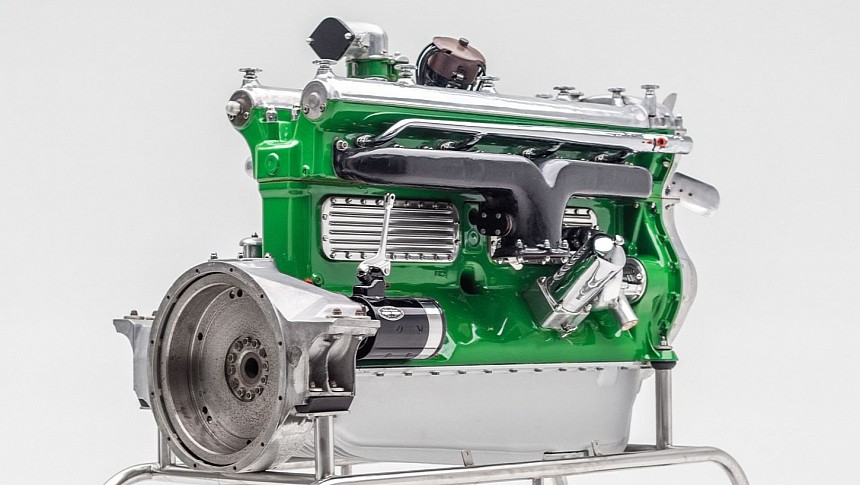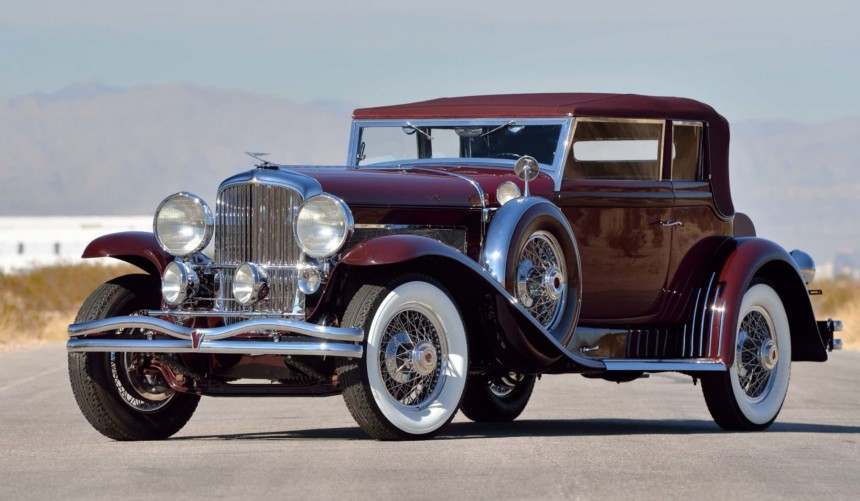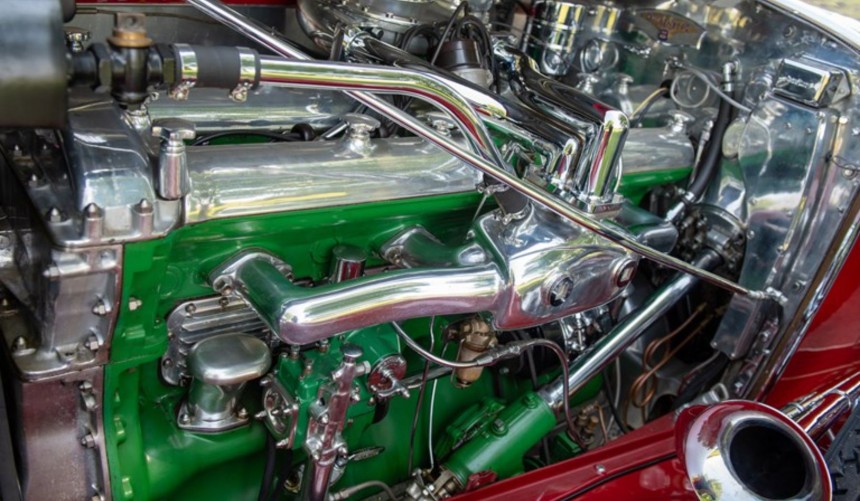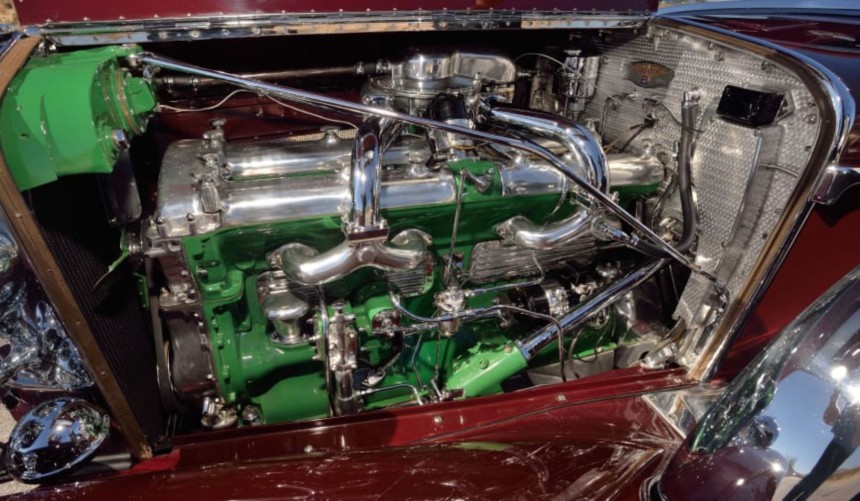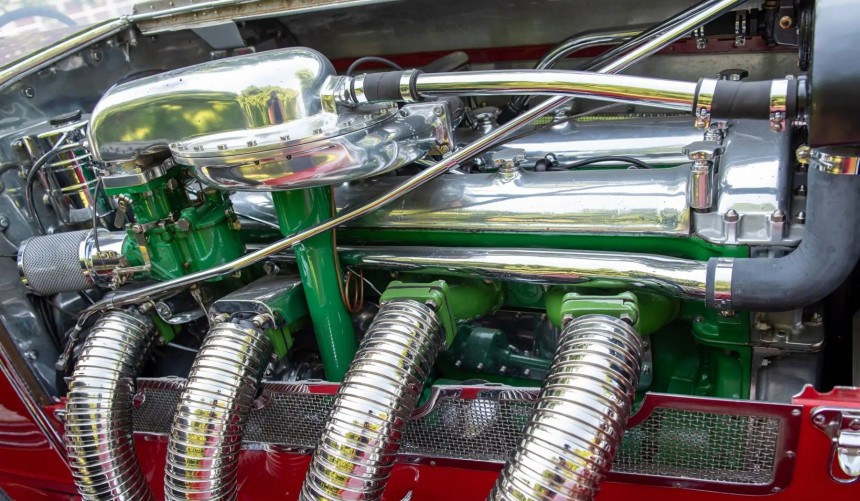Decades before the V8 became synonymous with American engineering excellence, straight-eights ruled the road and the track. Out of these, arguably the greatest was the Duesenberg Model J engine.
These days, enthusiasts with a soft spot for American manufacturers still mourn the loss of iconic brands like Pontiac, Plymouth, AMC, or Oldsmobile. But, if we were to single out the most impressive defunct US carmaker we'd love to revive somehow, it would be Duesenberg.
Duesenberg Automobile & Motors Company was founded in Indianapolis, Indiana, in 1920 by German-born brothers Frederick "Fred" and August "Augie" Duesenberg, who had made a name for themselves by building engines since the early 1900s.
The brothers had also founded the Des Moines, Iowa-based Mason Motor Car Company in 1906 and the Duesenberg Motors Company of Saint Paul, Minnesota, seven years later, but their third corporate venture was the one that made them famous worldwide.
Like Bugatti over the Atlantic, Duesenberg became known for developing some of the best luxury road cars and some of the most successful race cars in the US.
During the 1920s, Duesenberg became the first American company to win the French Grand Prix held at Le Mans (1921), while back home, it racked up four Indianapolis 500 wins (1922, 1924, 1925, and 1927) and a series of speed records at the Bonneville Salt Flats.
In the world of road cars, Duesenbergs were prohibitively expensive, yet near-flawlessly built. It all started with the 1921 Model A and culminated with the impressive 1928 Model J.
At the heart of both the company's race and road cars was an excellent straight-eight - the first to be mass-produced in the US.
In 1926, E. L. Cord, the owner of Auburn Automobile, bought the controlling stake in Duesenberg, but kept the brothers onboard and instructed them to build the finest car the country had ever seen.
The resulting car, dubbed Model J, was mainly the product of Fred's expertise, while Auggie handled other parts of the business. It was initially unveiled at the New York Car Show in 1928, then became available in Europe a year later after wowing the crowd at the Salon de l'automobile de Paris.
The Model J was a full-size, coachbuilt car packed with both luxurious and innovative features. But, unquestionably, its most exciting feature was the powerful straight-eight.
Displacing 419.7 ci (7 liters), the engine incorporated Duesenberg's race-tested know-how, providing an unprecedented level of performance for a US-built production road car.
The gargantuan undersquare straight-eight was built around a cast chrome-nickel iron block with a bore and stroke of 3.75 inches (95.25 mm) by 4.75 inches (120.65 mm).
Inside, it featured an equally massive, 150-pound (68 kg), 42-inch (1,066.8 mm) long forged crankshaft with eight fully counterweighted journals fabricated from chrome-nickel-manganese alloy. The vibrations produced by the engine were dampened by two innovative capsules partially filled with mercury which were fitted between the first and second journals.
The engine also featured forged Duralumin conrods and pistons cast in from the same alloy. Even more impressive, the iron cylinder head contained two overhead cams and four valves per cylinder.
In naturally-aspirated form, the 1,150-pound (521.6 kg) Model J straight-eight was rated at an impressive 265 hp, which made it nearly twice more powerful than similarly-sized eights from the likes of Cadillac or Packard.
In the decades that followed, several Duesenberg historians have argued that the output figure of the Model J straight-eight was deliberately inflated, on paper, by around 50 hp. Nevertheless, the engine was still one of the most potent of the era.
Form its debut until being discontinued in 1937, the engine received few upgrades. One of the most nothworthy was a new downdraft two-barrel carb that replaced the original updraft version strating with the 1934 model year, while the second was far more impressive.
In 1932, Duesenberg decided to infuse even more power in their amazing powerplant by the way of forced induction. Therfore, they equipped it with a Switzer-Cummins centrifugal supercharger capable of making up to 8 psi (0.55 bar) of boost. In this configuration, dubbed SJ, the unit could spit out 320 hp - an output figure that wouldn't be surpassed by an American engine for decades to come.
When fitted with a supercharged straight-eight, the nearly-three-ton Model J could sprint from 0 to 60 mph (97 kph) in around eight seconds and reach a top speed of up to 140 mph (225 kph).
Though the muscle cars of the 1960s and early-1970s took power to another level, the Model J straight-eight, particularly the SJ version, remains one of America's first high-performance engines to be offered on a production car.
It is believed that about 480 Model J cars were built from 1928 to 1937, of which only 36 received the supercharged version of the engine from the factory.
Few of them have survived, becoming highly saugh-after by collectors with a fondness for pre-WW II classics. According to classic.com, the average value of a Model J stands at $2.2 milion, while the rare, short-wheelbase SJ (SSJ) can be ten times more expensive.
Last year, a fully-restored J engine was auctioned off by Worldwide Auctioneers and if you want to take a closer look at this marvrlous piece of engineering, we recomand watching the video below.
Duesenberg Automobile & Motors Company was founded in Indianapolis, Indiana, in 1920 by German-born brothers Frederick "Fred" and August "Augie" Duesenberg, who had made a name for themselves by building engines since the early 1900s.
The brothers had also founded the Des Moines, Iowa-based Mason Motor Car Company in 1906 and the Duesenberg Motors Company of Saint Paul, Minnesota, seven years later, but their third corporate venture was the one that made them famous worldwide.
Duesenberg and the straight-eight
During the 1920s, Duesenberg became the first American company to win the French Grand Prix held at Le Mans (1921), while back home, it racked up four Indianapolis 500 wins (1922, 1924, 1925, and 1927) and a series of speed records at the Bonneville Salt Flats.
In the world of road cars, Duesenbergs were prohibitively expensive, yet near-flawlessly built. It all started with the 1921 Model A and culminated with the impressive 1928 Model J.
At the heart of both the company's race and road cars was an excellent straight-eight - the first to be mass-produced in the US.
In 1926, E. L. Cord, the owner of Auburn Automobile, bought the controlling stake in Duesenberg, but kept the brothers onboard and instructed them to build the finest car the country had ever seen.
The legendary Model J engine
The Model J was a full-size, coachbuilt car packed with both luxurious and innovative features. But, unquestionably, its most exciting feature was the powerful straight-eight.
Displacing 419.7 ci (7 liters), the engine incorporated Duesenberg's race-tested know-how, providing an unprecedented level of performance for a US-built production road car.
The gargantuan undersquare straight-eight was built around a cast chrome-nickel iron block with a bore and stroke of 3.75 inches (95.25 mm) by 4.75 inches (120.65 mm).
Inside, it featured an equally massive, 150-pound (68 kg), 42-inch (1,066.8 mm) long forged crankshaft with eight fully counterweighted journals fabricated from chrome-nickel-manganese alloy. The vibrations produced by the engine were dampened by two innovative capsules partially filled with mercury which were fitted between the first and second journals.
The engine also featured forged Duralumin conrods and pistons cast in from the same alloy. Even more impressive, the iron cylinder head contained two overhead cams and four valves per cylinder.
One of the most powerful engines of its era
In the decades that followed, several Duesenberg historians have argued that the output figure of the Model J straight-eight was deliberately inflated, on paper, by around 50 hp. Nevertheless, the engine was still one of the most potent of the era.
Form its debut until being discontinued in 1937, the engine received few upgrades. One of the most nothworthy was a new downdraft two-barrel carb that replaced the original updraft version strating with the 1934 model year, while the second was far more impressive.
In 1932, Duesenberg decided to infuse even more power in their amazing powerplant by the way of forced induction. Therfore, they equipped it with a Switzer-Cummins centrifugal supercharger capable of making up to 8 psi (0.55 bar) of boost. In this configuration, dubbed SJ, the unit could spit out 320 hp - an output figure that wouldn't be surpassed by an American engine for decades to come.
When fitted with a supercharged straight-eight, the nearly-three-ton Model J could sprint from 0 to 60 mph (97 kph) in around eight seconds and reach a top speed of up to 140 mph (225 kph).
The Duesenberg Model J straight-eight today
It is believed that about 480 Model J cars were built from 1928 to 1937, of which only 36 received the supercharged version of the engine from the factory.
Few of them have survived, becoming highly saugh-after by collectors with a fondness for pre-WW II classics. According to classic.com, the average value of a Model J stands at $2.2 milion, while the rare, short-wheelbase SJ (SSJ) can be ten times more expensive.
Last year, a fully-restored J engine was auctioned off by Worldwide Auctioneers and if you want to take a closer look at this marvrlous piece of engineering, we recomand watching the video below.
